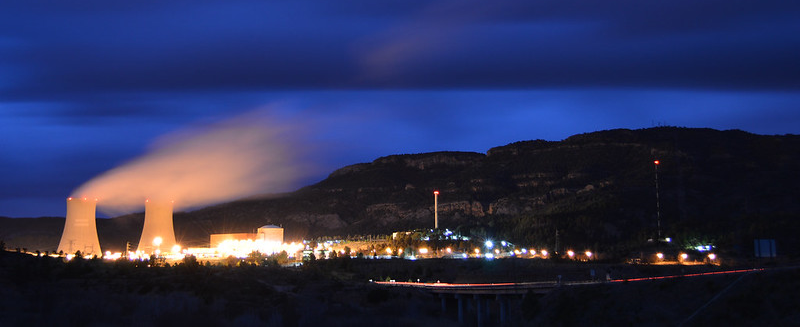
Ruling Out Nuclear Energy Now Could Be a Mistake
With expected growth in electric vehicles and demand for lower greenhouse gas emissions, one might think the merits of nuclear energy are growing more powerful. Nuclear plants generate almost 20% of the electricity produced in the United States and 55% of its carbon-free electricity. However, the U.S. Energy Information Agency (EIA) expects renewables to be the fastest growing source of electricity generation through 2050 with nuclear generation expected to decline from 20% in 2019 to 12% in 2050. On April 23, 2020, the U.S. Department of Energy released a document summarizing work by the U.S. Nuclear Fuel Working Group entitled “Restoring America’s Competitive Nuclear Energy Advantage” and offered recommendations to revive and strengthen the uranium mining industry, preserve and grow the assets and investments of the U.S. nuclear enterprise and regain global nuclear leadership . Will the recommendations change the trajectory of existing expectations?
Positives
Source of clean energy. According to the EIA, nuclear energy is the largest source of clean energy in the United States and produced more carbon-free electricity than all other sources combined. Nuclear generation avoids greater than 525 million metric tons of carbon dioxide emissions that would otherwise emanate from fossil fuels.
Economical and reliable source of electricity. In 2019, nuclear power plants operated at roughly 94% of their capacity and are a reliable source of baseload demand for electricity. Even though there were fewer nuclear reactors than in 2000, the amount of energy production in 2019 increased due to greater capacity from power plant upgrades and shorter refueling and maintenance cycles. While costs are high to commission a nuclear plant, they can be a source of less expensive power on a cost per kilowatt hour compared to coal or gas-fired power plants.
Nuclear industry may be a source of innovation. Investment in advanced nuclear technology could support a safe and reliable source of energy and promote a cleaner environment. Additionally, growth and innovation in the nuclear power industry could be a source of job growth for those wanting or needing to transition from the fossil fuel industry to careers in green energy.
Negatives
Renewables are a better option. According to the Annual World Nuclear Industry Status Report, renewables, including new wind and solar generators are increasingly cost competitive with existing nuclear power plants with generating capacity increasing faster than any other source of power. Viewed as a cleaner and relatively inexpensive fuel, natural gas is increasingly viewed as the fossil fuel of choice to bridge the gap as the United States transitions to lower carbon renewable energy sources such as wind and solar.
Risk of accidental nuclear meltdown. Three major nuclear meltdowns, including Three Mile Island in 1979, Chernobyl in 1986 and Fukushima in 2011, resulted in environmental and human costs for those living in the affected areas. Opponents of nuclear energy believe the risks and costs associated with one accident outweighs the benefits of expanding the nuclear power generation fleet.
Nuclear waste disposal. Opponents view nuclear energy as undesirable due to the production and use of radioactive fuels and the need to dispose of nuclear waste that takes years to degrade. Additionally, the question of where to store it is also controversial. Radiation associated with spent fuel slowly declines as it generally is stored on the grounds of operating reactors in impenetrable storage facilities.
Balanced View:
Renewables are becoming a more viable source of energy due to advances in technology and lower cost, albeit with significant government subsidies presently. While the United States pioneered nuclear technology, the number of nuclear plants in the U.S. is declining while growing abroad. With investment in advanced nuclear reactors, electric transmission, and greater consideration to designing safe and efficient siting, could the U.S. industry be reimagined and play an important role in supplying low-cost and reliable energy while promoting a cleaner environment? While the market will be the final arbiter, recommendations from the U.S. Nuclear Fuel Working Group deserve consideration.
Suggested Reading:
Energy Sector in Rapidly Growing Indonesia
Still Spots Open to Attend Wednesday July 8, Virtual Road Show
Indonesia Energy with Frank Ingriselli, President
Sources:
Monthly Energy Review, U.S. Energy Information Administration, June 2020.
Annual Energy Outlook 2020 with projections through 2050, U.S. Energy Information Agency, January 29, 2020.
Restoring America’s Competitive Nuclear Energy Advantage, U.S. Department of Energy, 2020.
Don’t Ignore the Nuclear Option, Bloomberg, Clara Ferreira Marques, May 31, 2020.
Nuclear Is Getting Hammered by Green Power and the Pandemic, Bloomberg, Lars Paulsson and Rachael Morison, May 3, 2020.
The World Nuclear Industry Status Report 2019, A Mycle Schneider Consulting Project, Mycle Schneider and Antony Froggat et al., September 2019.
Nuclear Energy Too Slow, Too Expensive to Save Climate: Report, Reuters, Marton Dunai and Geert De Clerq, September 23, 2019.
Why Nuclear Power Must Be Part of the Energy Solution, Yale Environment 360, Richard Rhodes, July 19, 2018.